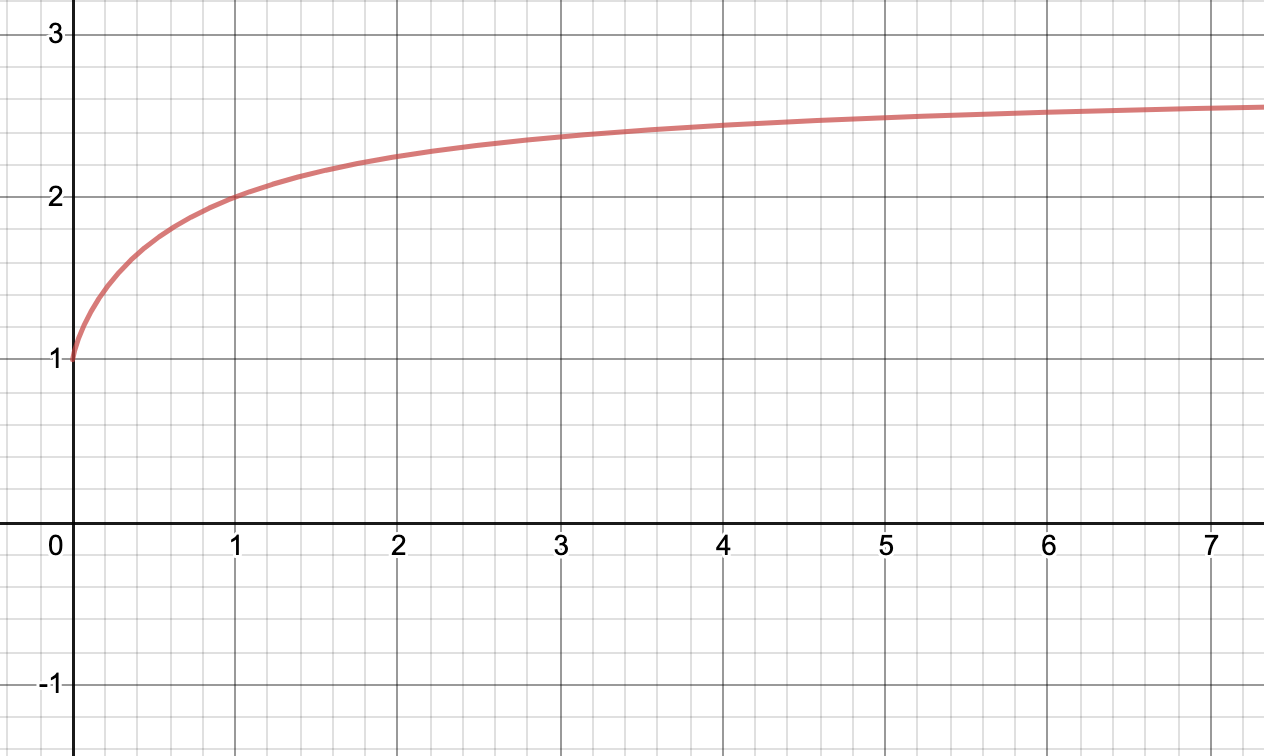Checking Concavity with Sage
09 Mar 2021 - Tags: sage
I haven’t been on MSE lately, because I’ve been fairly burned out from a few weeks of more work than I’d have liked. I’m actually still catching up, with a commutative algebra assignment that should have been done last week. I was (very kindly) given an extension, and I’ll be finishing it soon, though.
I meant to do it today, but I got my second covid vaccination earlier and it really took a lot out of me. I’m feverish and have a pretty bad migraine, so I didn’t want to work on “real things”, but I still wanted to feel productive… MSE it is.
Today someone asked a question, which again I’ll paraphrase here:
Why is
It clearly is concave. Here’s a picture of it:

Obviously it has an asymptote at
Thankfully, we can use sage to automate away most of the difficulties. I’ll more or less be rehashing my answer here. The idea is to put this example of using sage “in the wild” somewhere a bit easier to find than a stray mse post.
Showing that a function is convex (resp. concave) is routine but tedious,
especially when that function is twice differentiable. Then we can just check
We start by defining
xxxxxxxxxxf(x) = (1+1/x)^xsecondDerivative = diff(f,x,2)show(secondDerivative)In a perfect world, we could just… ask sage if this is
xxxxxxxxxxsolve(secondDerivative < 0, x)This gives a list of lists of domains, and if you intersect all the domains
in some fixed list, you get a region where the second derivative is
Let’s look at the second derivative again. We as humans can see how to clean it up a little, so let’s do that first:
Since
One obvious way we might try to simplify things is by turning our expression
into a rational function. After all, polynomials are more combinatorial
in nature than things like
So plugging in
But that means our expression of interest is upper bounded by
and we’ve reduced the problem to showing
and in the interest of offloading as much thinking as possible to sage, we see
xxxxxxxxxxassume(x > 0)bool(-1/(x^3 + 2*x^2 + x) < 0)and so
This was fairly painless, but we got pretty lucky with that estimate for
We’re at least a little bit out of luck, since Richardson’s Theorem shows that it’s undecidable whether certain (very nice!) functions are nonnegative. As an easy exercise, can you turn this into a proof that checking convexity is undecidable on some similarly nice class of functions?
Even though logicians came to ruin the fun (as we have a reputation for doing, unfortunately…), I’m curious if any kind of result is possible. Maybe there’s some hacky solution that works fairly well in practice? Approximating every nonpolynomial by the first, say, 50 terms of its taylor series comes to mind, but I’m currently struggling to get sage to expand and simplify expressions in way that makes me happy, so manipulating huge expressions like that is, at least for now, a bit beyond me2.
Again, all ideas are welcome ^_^
-
Another thing I tried was to get sage to do everything for us. But for some reason
bool(secondDerivative < 0)returns false, even when weassume(x > 0)… I suspect this is (again) because our expression is too complicated. After all, it seems like there are issues with much simpler expressions than this one. If anyone knows how to make this kind of direct query work, I would love to hear about it! ↩ -
Wow. I know I speak (and write) in run-on sentences, but this one’s on another level. I feel like I need a swear jar but for commas. ↩